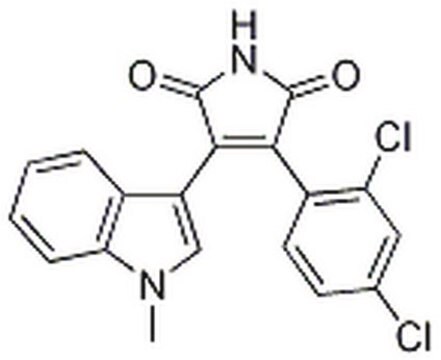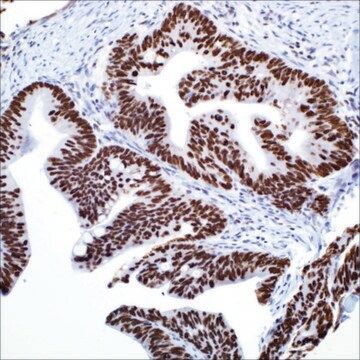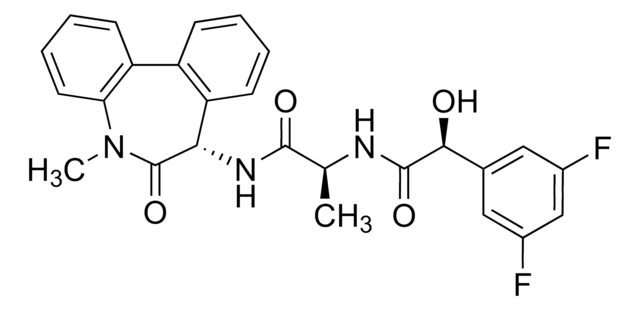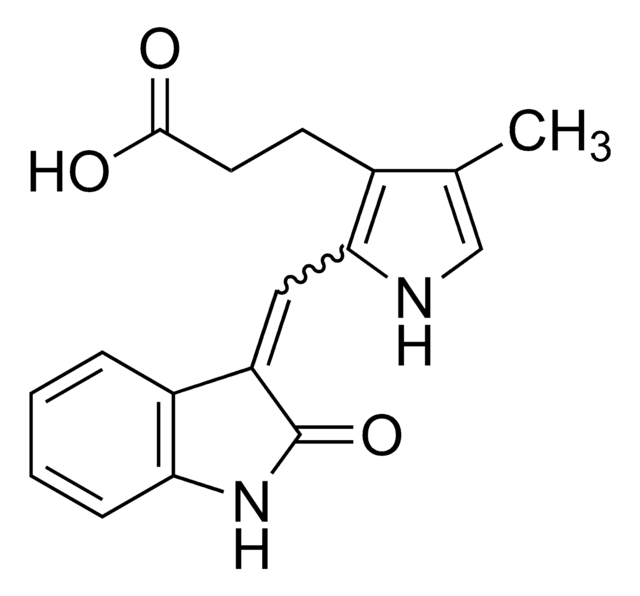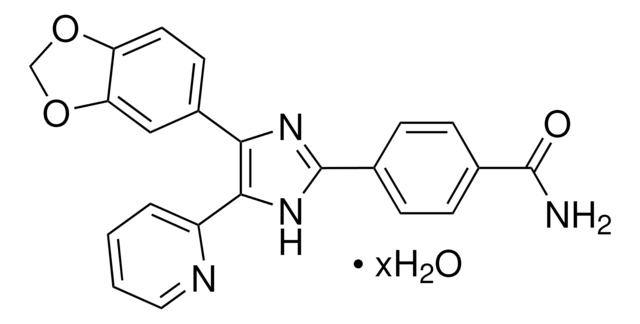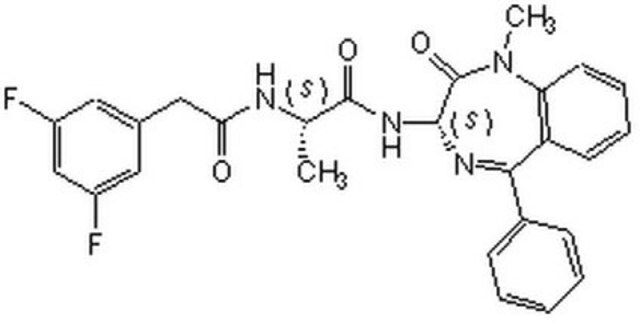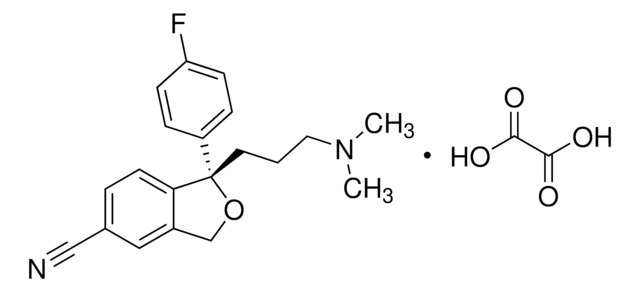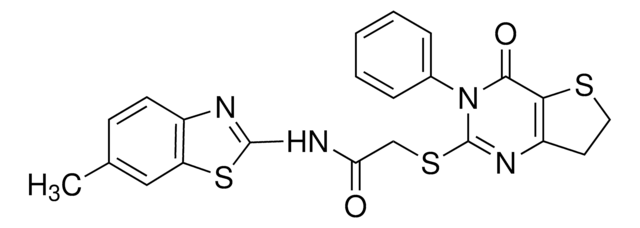565770
DAPT
≥98% (HPLC), lyophilized, γ-secretase inhibitor, Calbiochem®
Synonyme(s) :
γ-Secretase Inhibitor IX, DAPT, N-[N-(3,5-Difluorophenacetyl-L-alanyl)]-S-phenylglycine t-Butyl Ester
About This Item
Produits recommandés
product name
γ-Secretase Inhibitor IX, Gamma-Secretase Inhibitor IX - CAS 208255-80-5, is a cell-permeable inhibitor of γ-secretase (Aβtotal IC₅₀ = 115 nM, Aβ42 IC₅₀ = 200 nM).
Niveau de qualité
Pureté
≥98% (HPLC)
Forme
lyophilized
Fabricant/nom de marque
Calbiochem®
Conditions de stockage
OK to freeze
protect from light
Solubilité
DMSO: 20 mg/mL
Conditions d'expédition
ambient
Température de stockage
−20°C
InChI
1S/C23H26F2N2O4/c1-14(26-19(28)12-15-10-17(24)13-18(25)11-15)21(29)27-20(16-8-6-5-7-9-16)22(30)31-23(2,3)4/h5-11,13-14,20H,12H2,1-4H3,(H,26,28)(H,27,29)/t14-,20-/m0/s1
Clé InChI
DWJXYEABWRJFSP-XOBRGWDASA-N
Description générale
Actions biochimiques/physiologiques
Conditionnement
Avertissement
Autres remarques
Nishitomo, K. et al. 2006 J. Neurochem.99, 1555.
Oddo, S., et al. 2004. Neuron43, 321.
Dovey, H.F., et al. 2001. J. Neurochem.76, 173.
Sastre, M., et al. 2001. EMBO Rep.2, 835.
Vandermeeren, M., et al. 2001. Neurosci. Lett.315, 145.
Informations légales
Code de la classe de stockage
11 - Combustible Solids
Classe de danger pour l'eau (WGK)
WGK 3
Point d'éclair (°F)
Not applicable
Point d'éclair (°C)
Not applicable
Certificats d'analyse (COA)
Recherchez un Certificats d'analyse (COA) en saisissant le numéro de lot du produit. Les numéros de lot figurent sur l'étiquette du produit après les mots "Lot" ou "Batch".
Déjà en possession de ce produit ?
Retrouvez la documentation relative aux produits que vous avez récemment achetés dans la Bibliothèque de documents.
Les clients ont également consulté
Notre équipe de scientifiques dispose d'une expérience dans tous les secteurs de la recherche, notamment en sciences de la vie, science des matériaux, synthèse chimique, chromatographie, analyse et dans de nombreux autres domaines..
Contacter notre Service technique





